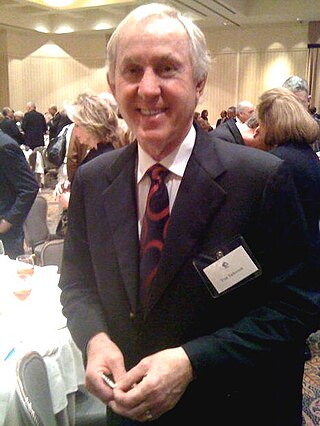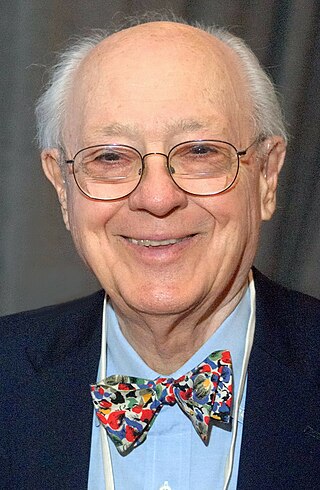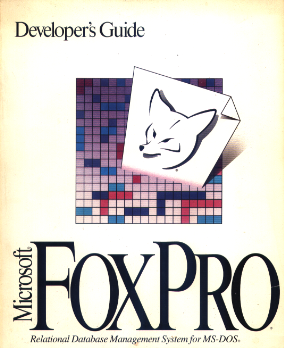Cecil Wayne Ratliff (born 1946) wrote the database program Vulcan. Raised in Germany and the US, he now resides in the Los Angeles area.
Cecil Wayne Ratliff (born 1946) wrote the database program Vulcan. Raised in Germany and the US, he now resides in the Los Angeles area.
Ratliff was born in 1946 in Trenton, Ohio, USA. From 1969 to 1982 he worked for the Martin Marietta Corporation in a progression of engineering and managerial positions. He was a member of the NASA Viking program flight team when the Viking spacecraft landed on Mars in 1976, and wrote the data management system, MFILE, for the Viking lander support software.
In 1978 Ratliff wrote Vulcan, a database application, to help him make picks for football pools. Written in Intel 8080 assembly language, it ran on the CP/M operating system and was modeled on JPLDIS. After selling Vulcan by himself from 1979 to 1980, he licensed the software, renamed dBASE, to Ashton-Tate. In 1982 Ratliff left JPL and joined Ashton-Tate as vice president of new technology. (He never used the software for its original purpose; in 1984 Ratliff confessed that dBASE had made him so busy that "I've only had time to watch two or three football games".) [1]
Ratliff was the project manager for dBASE III, as well as designer and lead programmer. [2] From 1987 to 1988 Ratliff wrote Emerald Bay, a client/server database manager. Currently retired, Ratliff spends time sailing and studying mathematics. He has worked on computer systems for use in competitive sailboat racing. [3]
MultiMate was a word processor developed by Multimate International for IBM PC MS-DOS computers in the early 1980s.

The Synclavier is an early digital synthesizer, polyphonic digital sampling system, and music workstation manufactured by New England Digital Corporation of Norwich, Vermont. It was produced in various forms from the late 1970s into the early 1990s. The instrument has been used by prominent musicians.

In the computer industry, vaporware is a product, typically computer hardware or software, that is announced to the general public but is late or never actually manufactured nor officially cancelled. Use of the word has broadened to include products such as automobiles.
Lotus Symphony was an integrated software package for creating and editing text, spreadsheets, charts and other documents on the MS-DOS operating systems. It was released by Lotus Development as a follow-on to its popular spreadsheet program, Lotus 1-2-3, and was produced from 1984–1992. Lotus Jazz on the Apple Macintosh was a sibling product.
Natural-language understanding (NLU) or natural-language interpretation (NLI) is a subtopic of natural-language processing in artificial intelligence that deals with machine reading comprehension. Natural-language understanding is considered an AI-hard problem.
dBase was one of the first database management systems for microcomputers and the most successful in its day. The dBase system includes the core database engine, a query system, a forms engine, and a programming language that ties all of these components together. dBase's underlying file format, the .dbf file, is widely used in applications needing a simple format to store structured data.

Francis Asbury Tarkenton is an American former professional football player who was a quarterback in the National Football League (NFL) for 18 seasons, primarily with the Minnesota Vikings. He played college football at the University of Georgia, where he was recognized as a twice first-team All-SEC, and was selected by the Vikings in the third round of the 1961 NFL Draft. After retiring from football, he became a media personality and computer software executive.

Charles William Bachman III was an American computer scientist, who spent his entire career as an industrial researcher, developer, and manager rather than in academia. He was particularly known for his work in the early development of database management systems. His techniques of layered architecture include his namesake Bachman diagrams.
Ashton-Tate Corporation was a US-based software company best known for developing the popular dBASE database application and later acquiring Framework from the Forefront Corporation and MultiMate from Multimate International. It grew from a small garage-based company to become a multinational corporation. Once one of the "Big Three" software companies, which included Microsoft and Lotus, the company stumbled in the late 1980s and was sold to Borland in September 1991.
Framework, launched in 1984, was an office suite to run on the (x86) IBM PC and compatibles with the MS-DOS operating system.
xBase is the generic term for all programming languages that derive from the original dBASE (Ashton-Tate) programming language and database formats. These are sometimes informally known as dBASE "clones". While there was a non-commercial predecessor to the Ashton-Tate product, most clones are based on Ashton-Tate's 1986 dBASE III+ release — scripts written in the dBASE III+ dialect are most likely to run on all the clones.
Paradox is a relational database management system currently published by Corel Corporation.
Full Impact was a spreadsheet program for the Apple Macintosh computer released by Ashton-Tate in the late 1980s. Full Impact was known for excellent graphing and visual display, far better than contemporary versions of Microsoft Excel. But this was also its only really compelling feature, and it was unable to find a market niche given the dominance of Excel in the Macintosh marketplace.

dBASE Mac was a database management system for the Apple Macintosh, released by Ashton-Tate in 1987. Although the GUI was lauded in the press, the application was so slow that it became something of a joke in the industry. Sales were dismal, and Ashton-Tate eventually decided to give up on dBASE Mac and instead port dBASE IV to the Mac, complete with a DOS-like interface. The product was then sold to a series of third-party developers, but they had little success and it disappeared from the market in the mid-1990s.
Synapse Software Corporation was an American video game development and publishing company founded in 1981 by Ihor Wolosenko and Ken Grant. It initially focused on the Atari 8-bit family, then later developed for the Commodore 64 and other systems. The company was purchased by Broderbund in late 1984, and the Synapse label retired in 1985.
The Jet Propulsion Laboratory Display Information System is a file management program written in FORTRAN.
Technical Analysis of Stocks & Commodities is an American, Seattle-based monthly magazine about commodity futures contracts, stocks, options, derivatives, and forex.

FoxPro was a text-based procedurally oriented programming language and database management system (DBMS), and it was also an object-oriented programming language, originally published by Fox Software and later by Microsoft, for MS-DOS, Windows, Macintosh, and UNIX. The final published release of FoxPro was 2.6. Development continued under the Visual FoxPro label, which in turn was discontinued in 2007.
The .dbf file extension represents the dBase database file. The file type was introduced in 1983 with dBASE II. The file structure has evolved to include many features and capabilities. Several additional file types have been added, to support data storage and manipulation. The current .dbf file level is called Level 7. The .dbf format is supported by a number of database products.
RETRIEVE is a database management system (DBMS) offered on Tymshare's systems starting in August 1971. It was written in Tymshare's own SUPER FORTRAN on the SDS 940. It offered basic single-file, non-relational database functionality using an interactive programming language. It is one of the earliest examples of software as a service (SaaS).